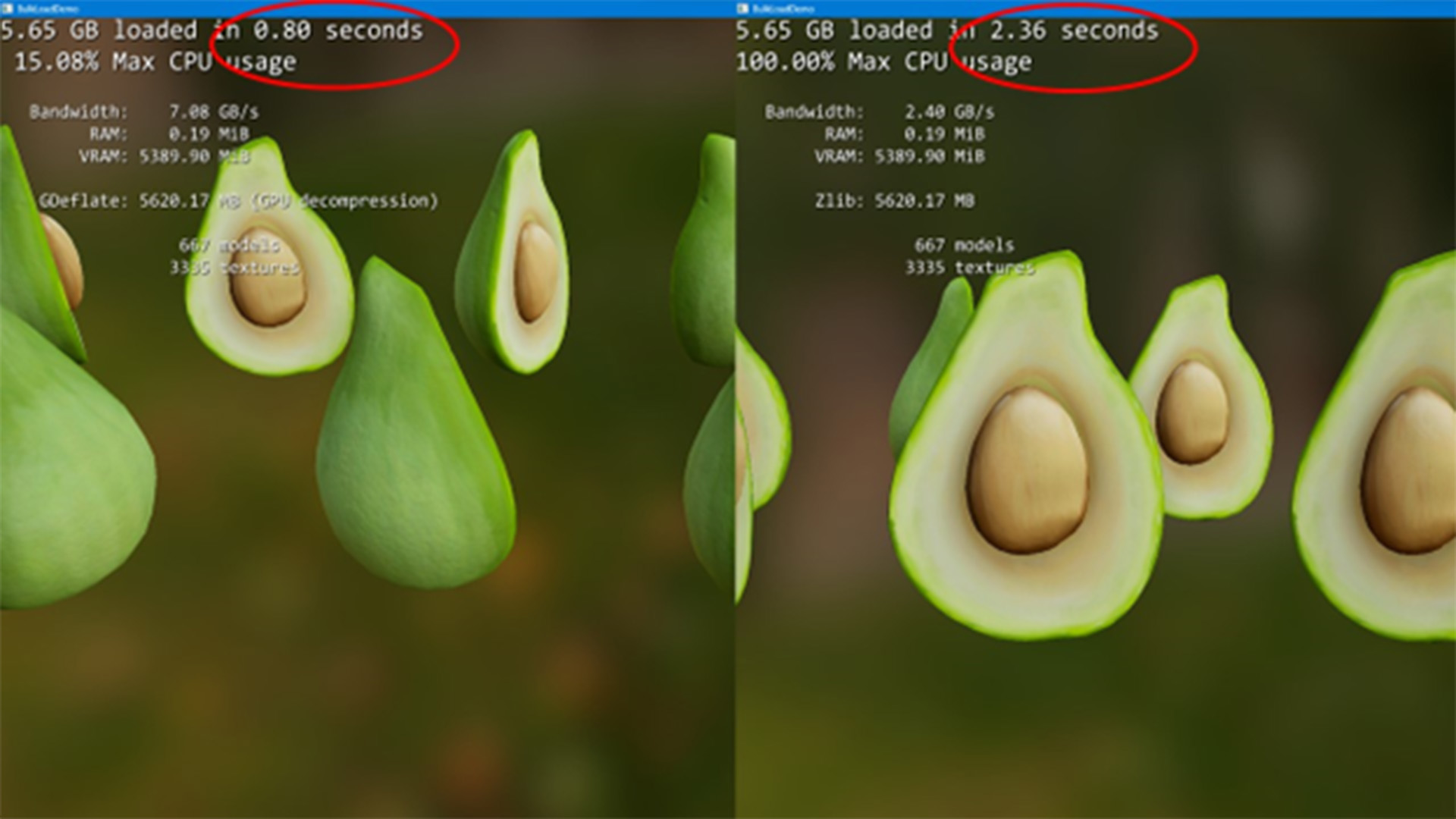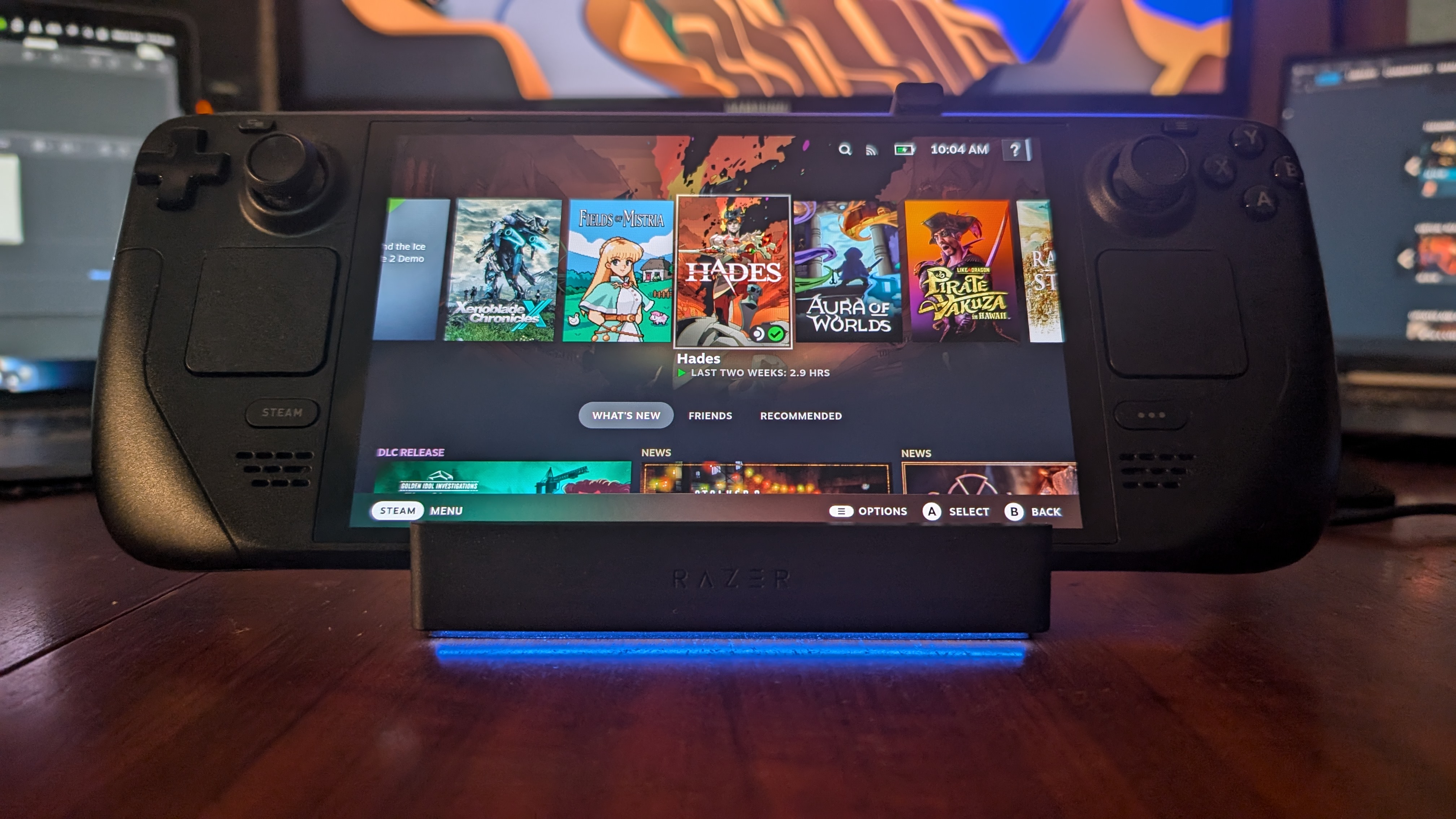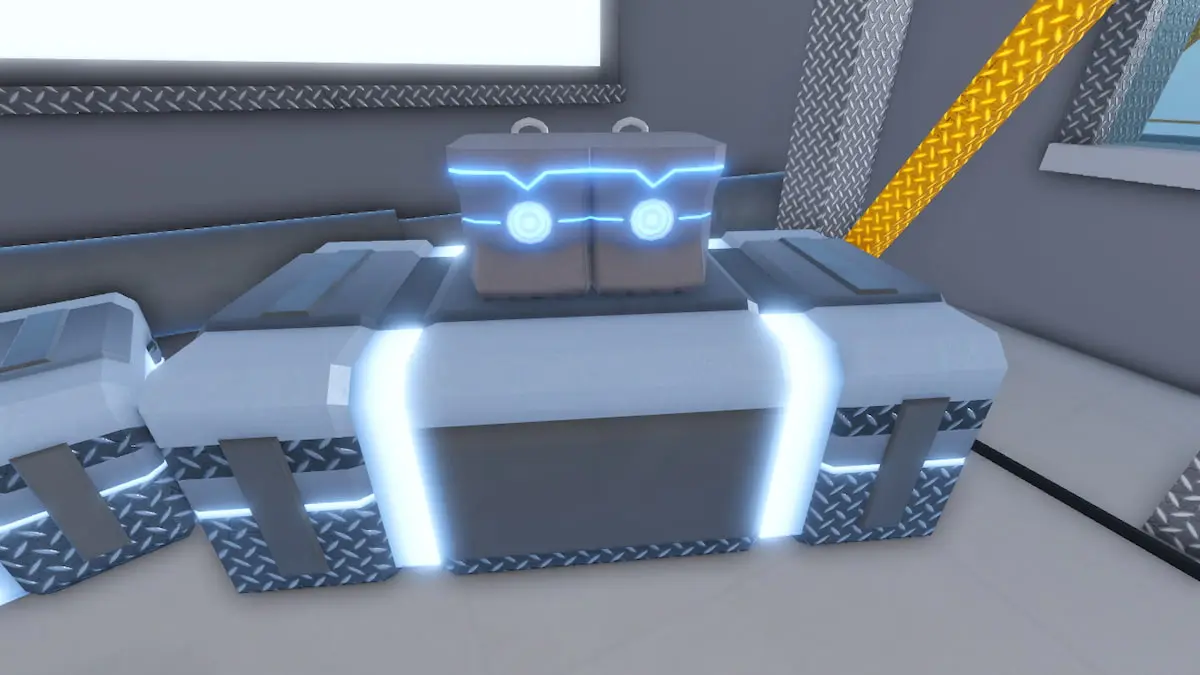
Avocados or game assets, in fact.
DirectStorage is Microsoft’s way of speeding up load times in games and allowing developers to better take advantage of speedy SSDs. It’s sure to be one of the biggest steps towards even more impressive and expansive games, once it’s actually available in any, but even before we get our hands on it Microsoft’s making it that much better.
Following the release of the DirectStorage API back in March (time flies), Microsoft has announced DirectStorage 1.1. Essentially, the newer version adds GPU decompression to proceedings, which offloads the time-consuming decompression work from your CPU and onto your highly-parallel GPU.
Traditionally, compressed game assets are transferred from your storage medium (mostly an SSD nowadays) to system memory, where your CPU will decompress the assets before shifting them on to your GPU as required.
With DirectStorage 1.1, it’s possible to skip a whole lot of that and take a much more direct route. Assets are transferred from an NVMe SSD (DirectStorage 1.0 already speeds up this process) and transfers them directly to the GPU for decompression. Thus saving seconds or more in load times for assets.
“…scenes are loading nearly 3x faster and the CPU is almost entirely freed up to be used for other game processes,” Microsoft confirms.
The end result should be games load quicker on PC, which is something we’ve seen the more proprietary Xbox and PlayStation console architectures have an advantage in for a little while now. Though following on from the first wave of games, when DirectStorage compatible PCs are more ubiquitous, developers should be able to really push the limits of what a game can be with more flexibility in load times, asset quality, and scale.
AMD has its own implementation of the tech called SmartAccess Storage. (Image credit: AMD)
That’s the thing, there are some requirements for DirectStorage, and also specifically DirectStorage 1.1 with GPU Decompression:
Windows 10 or Windows 11—Microsoft expects the greatest improvement on Windows 11 but “both Windows 10 and Windows 11 will see gains from an efficient GPU decompression implementation.”An NVMe SSD—preferably a very quick one, such as a high-speed PCIe 4.0 drive. Perhaps PCIe 5.0 drives will be even better when they arrive next year.Any DirectX 12 GPU that supports Shader Model 6.0—This shader model has been around for a while now, so most modern GPUs should suffice. However, Microsoft recommends a DX12 Ultimate capable card, which is basically one with RT support and a support for a few other key new rendering features.A DirectStorage compatible game—it’s all well and good having the hardware, but you need the software to bring it all together. This is the piece of the puzzle we’re still missing today.
There aren’t any DirectStorage games right now, unfortunately. We were expecting to see the technology arrive in Forspoken first, though the game was delayed in the summer until 2023, kicking the DirectStorage can down the road, too. Whether it’ll still be the first game out of the gate with DirectStorage now, we can’t be sure, but Forspoken is meant to be arriving in January now, so it’s probably still our best bet.
To make DirectStorage work, Microsoft and Nvidia have teamed up to introduce a new compression format, contributed by Nvidia, called GDeflate.
This new file format is reportedly lossless but allows for optimised “high-throughput decompression on the GPU with deflate-like compression ratios.
(Image credit: Future)
Best SSD for gaming: the best solid state drives around
Best PCIe 4.0 SSD for gaming: the next gen has landed
The best NVMe SSD: this slivers of SSD goodness
Best external hard drives: expand your horizons
Best external SSDs: plug in upgrades for gaming laptops and consoles
“GDeflate saves CPU cycles by offloading costly decompression operations to the GPU, while saving system interconnect bandwidth and on-disk footprint at the same time,” Microsoft’s blog on DirectStorage 1.1 says.
Don’t worry, however, GDeflate isn’t proprietary for Nvidia GPUs. You may have heard of Nvidia’s own RTX IO technology, which will be used in conjunction with DirectStorage, but also AMD has its own SmartAccess Storage technology which sounds somewhat similar. Intel, too, has some plans for DirectStorage, it seems, with all three GPU companies (it’s still weird that there’s three now) set to support GDeflate. That should mean all the latest cards are capable of utilising the new format when the time comes.
With the better part of a year since DirectStorage has been available to developers, I would suspect that 2023 will be the year we get our hands on a good few games that actually support the technology. That should coincide with new GPU launches, PCIe 5.0 SSDs, and speedy CPUs. All our PC gaming ducks are in a row.
You can check if your PC will be ready for DirectStorage using the Microsoft Game Bar.







